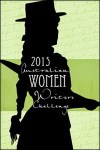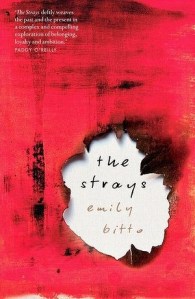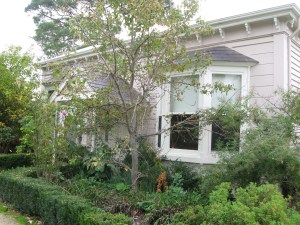2014, 336 p.
I had heard that this book was inspired by John and Sunday Reed and the Heide artists, and for the opening pages I kept wondering who each character was representing.
I soon let go of that rather fruitless quest, and I’m glad that I did. This book is much more than a fictionalized history: it’s a reflection on the loss of childhood innocence, families, sisters, art and secrets.
The book starts in the 1980s as Lily, an established art historian receives a letter from her childhood friend Eva Trentham, from whom she has been long estranged, asking her to attend a retrospective exhibition of Eva’s father’s artwork. Lily is thrust back fifty years into reminiscence about her childhood infatuation with the Trentham family- loud, artistic, transgressive – and the artists who circulated around them. Lily is an only child, and her description of her own parents is flat, muffled and dull, just as she perceived them to be in comparison with the Trentham house where she was treated as yet another of the ‘strays’ who attached themselves to the family.
In many ways this book reminded me of L. P Hartley’s The Go-Between, Ian McEwan’s Atonement or Evelyn Waugh’s Brideshead Revisited. In all these books we have a regretful, adult narrator, reflecting on a situation in which they were the immersed observer, infatuated by difference but ultimately confirmed in their outsider status by actions which they did not really understand at the time. All these books are suffused by a summer goldenness, and so is this book too, but it’s the distinctive heat and smell of an Australian summer. I’ve visited Heide many times, and clearly Emily Bitto has too, and she captures beautifully the river flats, a rampant but much-loved garden and a rambling farm house.
These are large characters, manipulators and exhibitionists by turn, fuelled by alcohol, drugs and sexuality. The entangled relationships between different adults in the household are observed with an innocent, but increasingly knowing eye, but the sense of impending doom builds, and the betrayal when it comes, is not unexpected- although perhaps not in the way I anticipated.
This is a remarkedly assured debut novel. Her descriptions are evocative, her shifts in chronology are confident and the narrator draws you into her hurt, wistful excitement over such a different way of living that she still mourns losing.
This book spoke to me on so many levels- as a riff on a well-known story about the Heide painters and artistic Melbourne in the pre-WWII years, as a reflection on childhood and the intimacy of pre-pubescent best friends, and as an exploration of the heady combination of sex, alcohol and freedom, and the lure of a transgressive lifestyle.
[Actually, I read The Strays and wrote this review almost six months ago. It was only when I read Sue’s insightful review at Whispering Gums that I looked for my own review on my blog. Where on earth was it? It is with much relief that I have found it bobbing around on my tablet, and assured myself that yes, I did really read it, and yes, I did write a review. Phew.]
I’ve added this to the Australian Women Writers Challenge



Pingback: The Strays and my missing reviews | The Resident Judge of Port Phillip
Haha, RJ, how many other reviews do you have lurking, waiting to see the light of the internet? And yes, The go-between is another one this book is reminiscent of. Nice review.
There’s about five that are more or less ready to go. Also, I’ve read about three books recently which I need to blog about while I can still remember them!
LOL I wish I had some lurking ready-to-go on my blog!
Haha, me too! Though YOU shouldn’t Lisa – you don’t seem to be lacking in reviews!
Pingback: Australian Women Writers Challenge 2015 wrap up | The Resident Judge of Port Phillip
Pingback: Six Degrees of Separation: from ‘Normal People’ to…. | The Resident Judge of Port Phillip
Pingback: Six Degrees of Separation: From ‘Beezus and Ramona’ to…. | The Resident Judge of Port Phillip
Pingback: Six Degrees of Separation: From ‘The Museum of Modern Love’ to… | The Resident Judge of Port Phillip